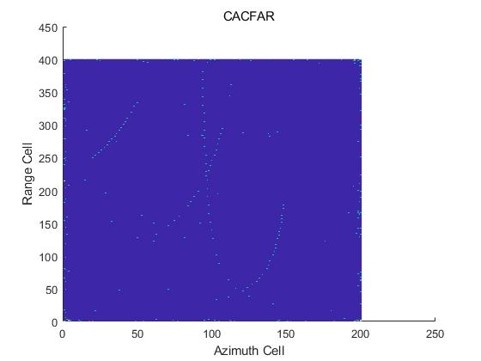1
2
3
4
5
6
7
8
9
10
11
12
13
14
15
16
17
18
19
20
21
22
23
24
25
26
27
28
29
30
31
32
33
34
35
36
37
38
39
40
41
42
43
44
45
46
47
48
49
50
51
52
53
54
55
56
57
58
59
60
61
62
63
64
65
66
67
68
69
70
71
72
73
74
75
76
77
78
79
80
81
82
83
84
85
86
87
88
89
90
91
92
93
94
95
96
97
98
99
100
101
102
103
104
105
106
107
108
109
110
111
112
113
114
115
116
117
118
119
120
121
122
123
124
125
126
127
128
129
130
131
132
133
134
135
136
137
138
139
140
141
142
143
144
145
146
147
148
149
150
151
152
153
154
155
156
157
158
159
160
161
162
163
164
165
166
167
168
169
170
171
172
173
174
175
176
177
178
179
180
|
import scipy.io as scio
import numpy
import scipy.stats as st
import time
from IWR.track import *
threshold = st.chi2.ppf(0.80, 3)
T = 0.1
F = numpy.mat([[1, 0, 0, T, 0, 0], [0, 1, 0, 0, T, 0], [0, 0, 1, 0, 0, T], [0, 0, 0, 1, 0, 0], [0, 0, 0, 0, 1, 0],
[0, 0, 0, 0, 0, 1]])
H = numpy.mat([[1, 0, 0, 0, 0, 0], [0, 1, 0, 0, 0, 0], [0, 0, 1, 0, 0, 0]])
Gamma = numpy.mat([[T * T / 2, 0, 0], [0, T * T / 2, 0], [0, 0, T * T / 2], [T, 0, 0], [0, T, 0], [0, 0, T]])
Q = Gamma * Gamma.T * 0.5
R = 0.1 * H * H.T
vmin = 0.2
vmax = 4
max_velocity = 2
def beginTrack(points):
global threshold, T, F, H, Gamma, Q, R, vmin, vmax
outside = []
index = 0
testroot = []
Z_k = (points[0])
Z_k_plus1 = (points[1])
for j in range(0, Z_k.shape[1]):
for k in range(0, Z_k_plus1.shape[1]):
d = max(0, numpy.linalg.norm(Z_k_plus1[:, k] - Z_k[:, j]) - vmax * T) + max(0, -numpy.linalg.norm(
Z_k_plus1[:, k] - Z_k[:, j]) + vmin * T)
D = d / numpy.linalg.det(R + R) * d
if D <= threshold:
temp = TestTrack(Z_k[:, j])
temp.addseq(Z_k_plus1[:, k])
Px0 = 5 * numpy.eye(6)
P = F * Px0 * F.T + Q
S = H * P * H.T + R * 0.2
K = P * H.T * numpy.linalg.inv(S)
Pkk = (numpy.eye(6) - K * H) * P
x_init = numpy.concatenate((Z_k_plus1[:, k], (Z_k_plus1[:, k] - Z_k[:, j]) / T), axis=0)
x_forest = F * x_init
temp.est = x_init
temp.pkk = Pkk
temp.x_predict = x_forest
temp.M = 2
temp.N = 2
testroot.append(temp)
return testroot
def TestToConfirmed(testroot):
confirmedroot = ConfirmedTrack(testroot.start)
confirmedroot.seq = testroot.seq
confirmedroot.est = testroot.est
confirmedroot.pkk = testroot.pkk
confirmedroot.seq = testroot.seq
confirmedroot.x_predict = testroot.x_predict
return confirmedroot
def MOT(Z_k, Z_k_prev, confirmedroot, testroot):
global threshold, T, F, H, Gamma, Q, R, vmin, vmax
Z_k_present = Z_k
if Z_k.shape[1] == 0:
if len(confirmedroot) != 0:
pos = []
for kk in range(0, len(confirmedroot)):
confirmedroot[kk].board += 1
if confirmedroot[kk].board >= 4:
pos.append(kk)
confirmedroot = numpy.delete(confirmedroot, pos)
confirmedroot = confirmedroot.tolist()
if Z_k.shape[1] != 0:
if len(confirmedroot) != 0:
pos = []
for kk in range(0, len(confirmedroot)):
if Z_k.shape[1] == 0:
break
P = F * confirmedroot[kk].pkk * F.T + Q
S = H * P * H.T + R
K = P * H.T * numpy.linalg.inv(S)
outside = H * confirmedroot[kk].x_predict
V = []
for i in range(0, Z_k.shape[1]):
V.append((Z_k[:, i] - outside).T * numpy.linalg.inv(S) * (Z_k[:, i] - outside))
index = numpy.argmin(V)
val = numpy.amin(V)
if val <= threshold:
confirmedroot[kk].addseq(Z_k[:, index])
est = confirmedroot[kk].x_predict + K * (Z_k[:, index] - outside)
confirmedroot[kk].addest(est)
confirmedroot[kk].pkk = (numpy.eye(6) - K * H) * P
confirmedroot[kk].x_predict = F * est
confirmedroot[kk].board = 0
Z_k = numpy.delete(Z_k, index, axis=1)
else:
confirmedroot[kk].addseq(outside)
confirmedroot[kk].addest(confirmedroot[kk].x_predict)
confirmedroot[kk].pkk = P
confirmedroot[kk].x_predict = F * confirmedroot[kk].est[:, -1]
confirmedroot[kk].board += 1
if confirmedroot[kk].board >= 4 or numpy.linalg.norm(confirmedroot[kk].est[3:6, -1]) > max_velocity:
pos.append(kk)
confirmedroot = numpy.delete(confirmedroot, pos)
confirmedroot = confirmedroot.tolist()
if Z_k.shape[1] != 0:
if len(testroot) != 0:
pos = []
for kk in range(0, len(testroot)):
if Z_k.shape[1] == 0:
break
P = F * testroot[kk].pkk * F.T + Q
S = H * P * H.T + R
K = P * H.T * numpy.linalg.inv(S)
outside = H * testroot[kk].x_predict
V = []
for i in range(0, Z_k.shape[1]):
V.append((Z_k[:, i] - outside).T * numpy.linalg.inv(S) * (Z_k[:, i] - outside))
index = numpy.argmin(V)
val = numpy.amin(V)
if val <= threshold:
testroot[kk].addseq(Z_k[:, index])
est = testroot[kk].x_predict + K * (Z_k[:, index] - outside)
testroot[kk].addest(est)
testroot[kk].pkk = (numpy.eye(6) - K * H) * P
testroot[kk].x_predict = F * est
testroot[kk].M += 1
testroot[kk].N += 1
Z_k = numpy.delete(Z_k, index, axis=1)
else:
testroot[kk].addseq(outside)
testroot[kk].addest(testroot[kk].x_predict)
testroot[kk].pkk = P
testroot[kk].x_predict = F * testroot[kk].est[:, -1]
testroot[kk].N += 1
if testroot[kk].N == 6:
if testroot[kk].M >= 4 and numpy.linalg.norm(testroot[kk].est[3:6, -1]) < max_velocity:
confirmedroot.append(TestToConfirmed(testroot[kk]))
else:
pos.append(kk)
testroot = numpy.delete(testroot, pos)
testroot = testroot.tolist()
if Z_k.shape[1] != 0:
testroot.extend(beginTrack([Z_k_prev, Z_k_present]))
Z_k_prev = Z_k_present
return confirmedroot, testroot, Z_k_present
|


